Destinations
Europe’s Best Resorts for Couples
Explore 33,000+ golf courses in 180 countries.
Follow the latest news and trends in golf.
Connect with like-minded golfers.
Find everything you need for your golf equipment and gear needs.
Travel, golf resorts, lifestyle, gear, tour highlights and technology.
All Square
Suggestions
Destinations
Europe’s Best Resorts for Couples
Amateur Golf
Europe’s Best Pro-Am Golf Events for Amateurs
Course Reviews
Top 10 Par‑3s You’ll Never Forget
Course Reviews
The Architects Behind Europe’s Most Iconic Courses
Contests
The Skins Game: Results & Overview
Community
Rewilding the Rough: Nature-First Golf Design
Course Reviews
The History Behind the Ryder Cup Courses
Destinations
Golfing the Mediterranean: From Costa Brava to Sicily
Destinations
How to Choose Between Spain’s Top Golf Regions
Clubs
Sami Välimäki’s Breakthrough WITB at The RSM Classic
Community
Essential Etiquette for International Golfing
Course Reviews
Europe’s Most Photogenic Golf Holes
Abu Dhabi HSBC Championship
Aaron Rai’s Winning WITB at Abu Dhabi HSBC Championship
Course Reviews
The Best Golf Courses Near Pinehurst That Aren’t Pinehurst No. 2
Course Reviews
The Els Club Vilamoura: Golfing Grandeur in the Algarve
Amateur Golf
Top Golfers to Watch in 2025
Clubs
Maja Stark’s Breakthrough Win at the 2025 U.S. Women’s Open
Gear
The New Chrome Tour Triple Diamond Golf Balls
DP World Tour
Ryder Cup 2025: Who Will Make the Cut for Team Europe?
Course Reviews
Where to Travel for Golf This Summer
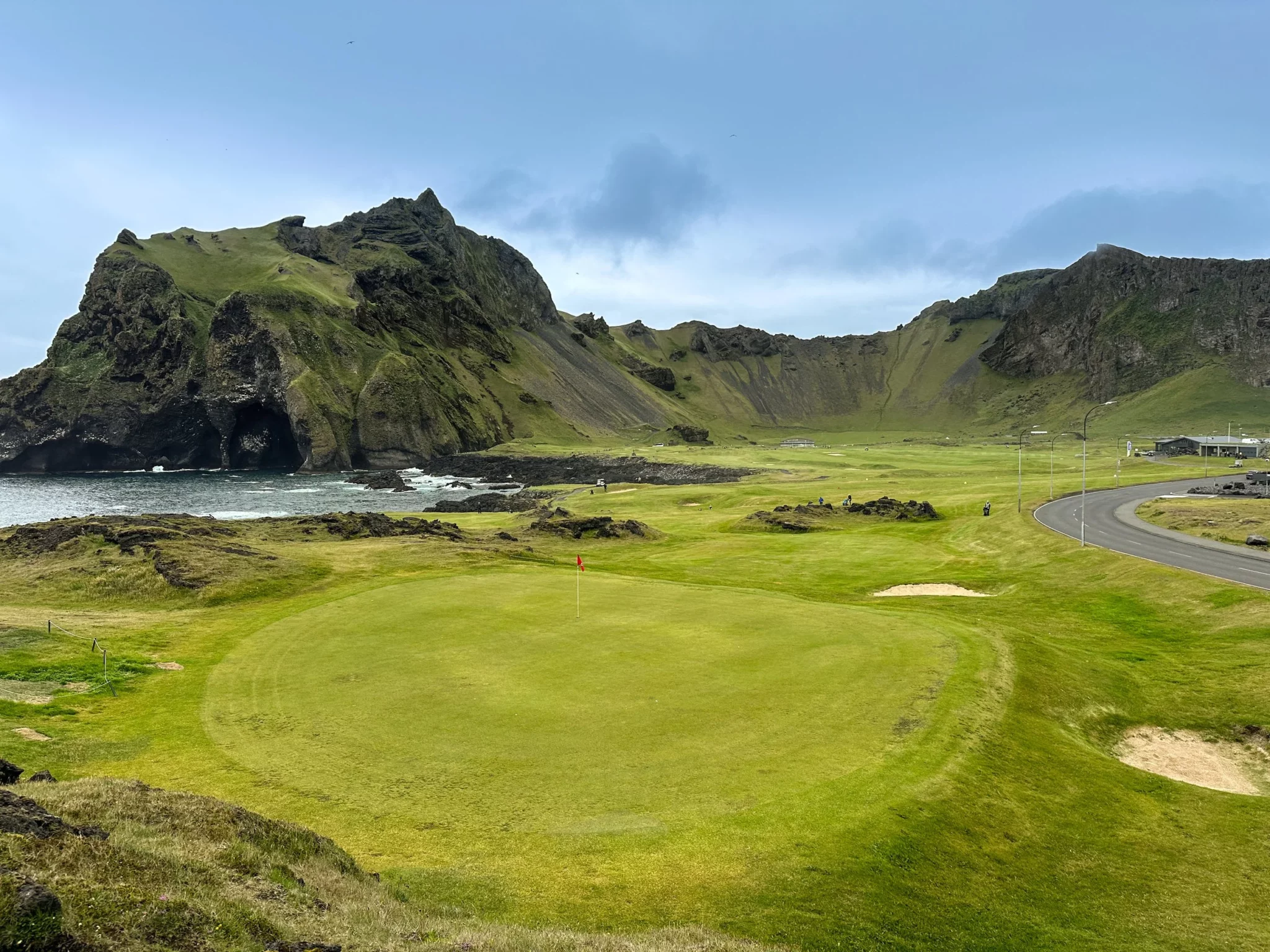
Iceland sits astride the Mid-Atlantic Ridge, where the North American and Eurasian tectonic plates diverge. This geological setting means regular volcanic, tectonic, and glacial activity — lava flows, craters, fissures, geothermal heat, glaciers carving valleys. Over millennia, these forces have built a terrain of sharp contrasts: rugged lava fields, black volcanic sand, cliffs, and mountains juxtaposed with green mosses, rivers and glaciers. Golf courses in Iceland often draw on this raw terrain for character.
The climate also plays a part. Iceland’s summer days are long; around the solstice, golfers can play well into the night under the midnight sun. Winters are harsh, often limiting the golf season, but the contrast between the short, brilliant summers and long winters adds texture to playing there.
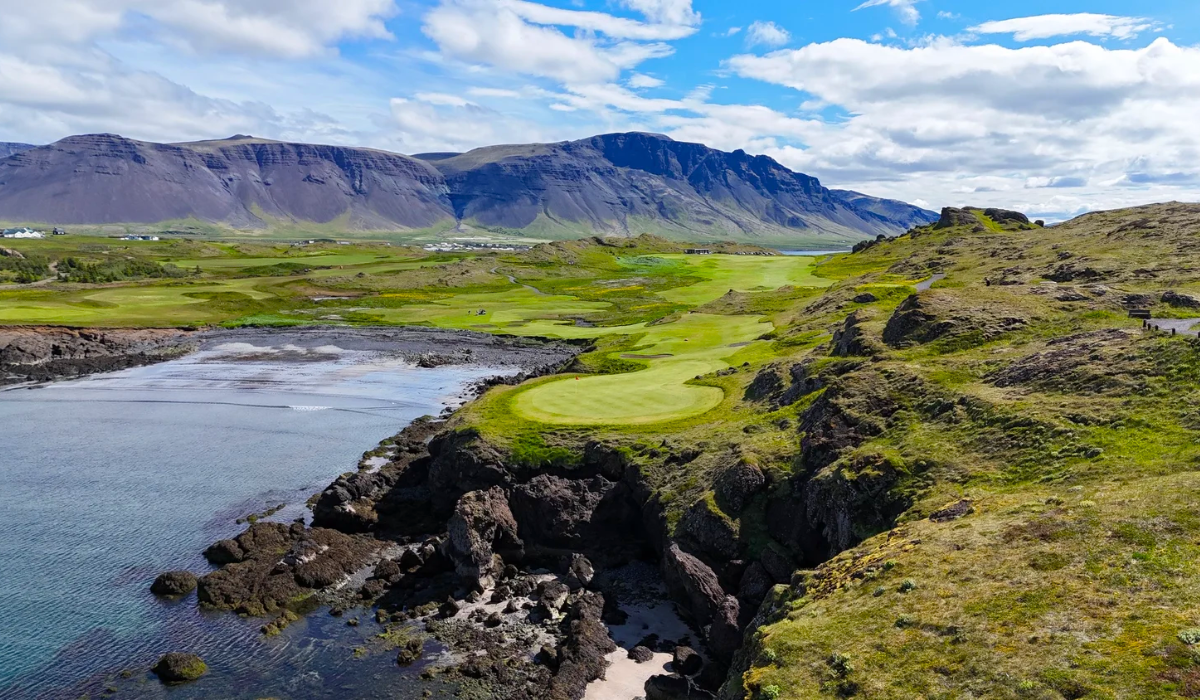
Golf courses built in volcanic settings in Iceland offer:
Here are a few of the courses that best embody this volcanic spirit.

Built inside an old volcano (on Heimaey, the largest of the Vestmannaeyar islands), this 18-hole course is framed by steep volcanic cliffs and ocean. Holes play beneath towering crater walls, and sea breezes come into play. It is often praised for its greens, scenery, and the surreal feeling of being in such a raw natural bowl.
The History: the club was founded in 1938 as a 9-hole course; it was expanded later. It’s the southernmost golf club in Iceland and plays at ~5,820 yards, par 70.
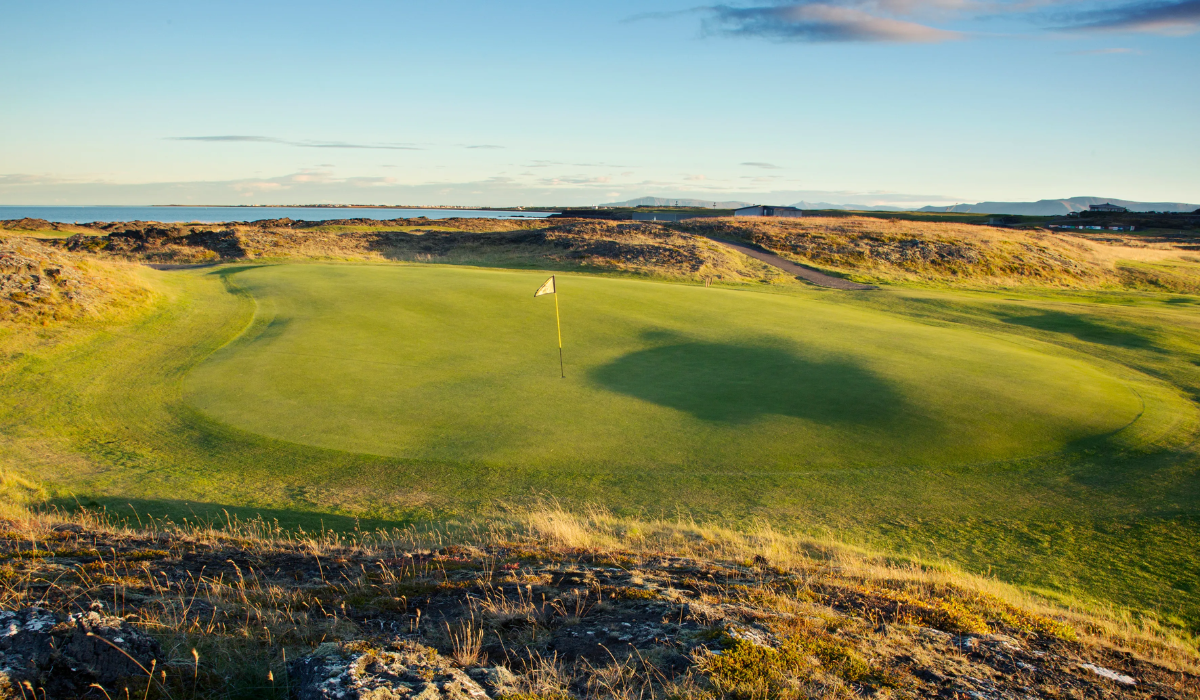
Situated on the Reykjanes Peninsula, near Reykjavik. Keilir’s front nine threads through lava fields: raw, black lava rock, rough, sometimes stark but beautiful. The back nine shifts to more forgiving former farmland, yet with views of the Atlantic. This dual personality of harsh lava and gentler terrain gives players a taste of everything volcanic golf can offer.
Keilir also hosts tournaments like the Amstel Light Iceland Open in cooperation with Reykjavik GC, often timed around the summer solstice.
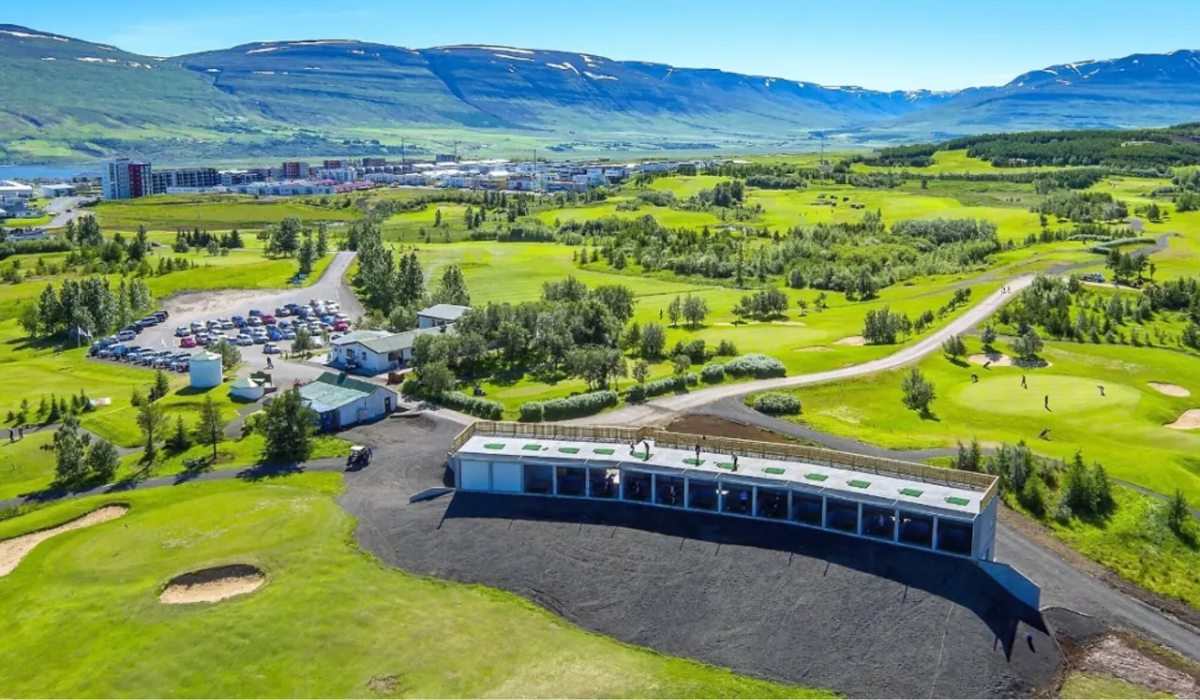
Up in the north, near the Arctic Circle, perched in a region that sees dramatic contrasts in light and weather. The course has rock outcroppings and ridgelines, and offers views over wide landscapes. Even though not all of Akureyri is strictly volcanic terrain, its setting gives the feel of remoteness and exposure. In summer, one can play in near-24-hour daylight.
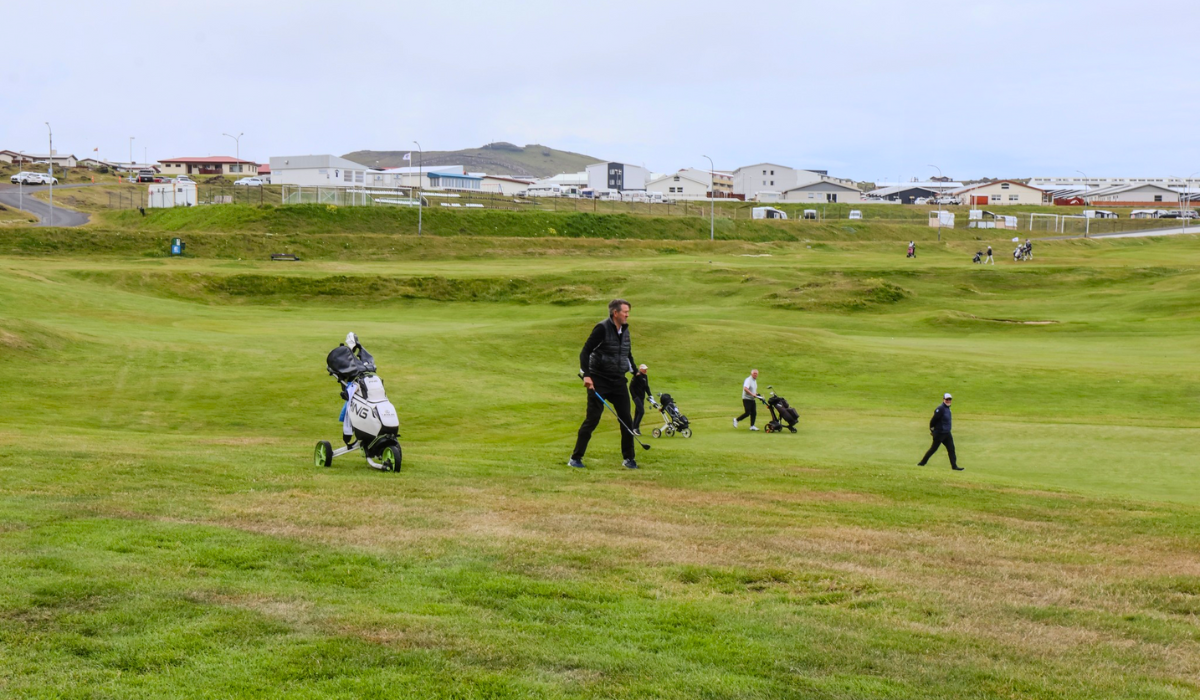
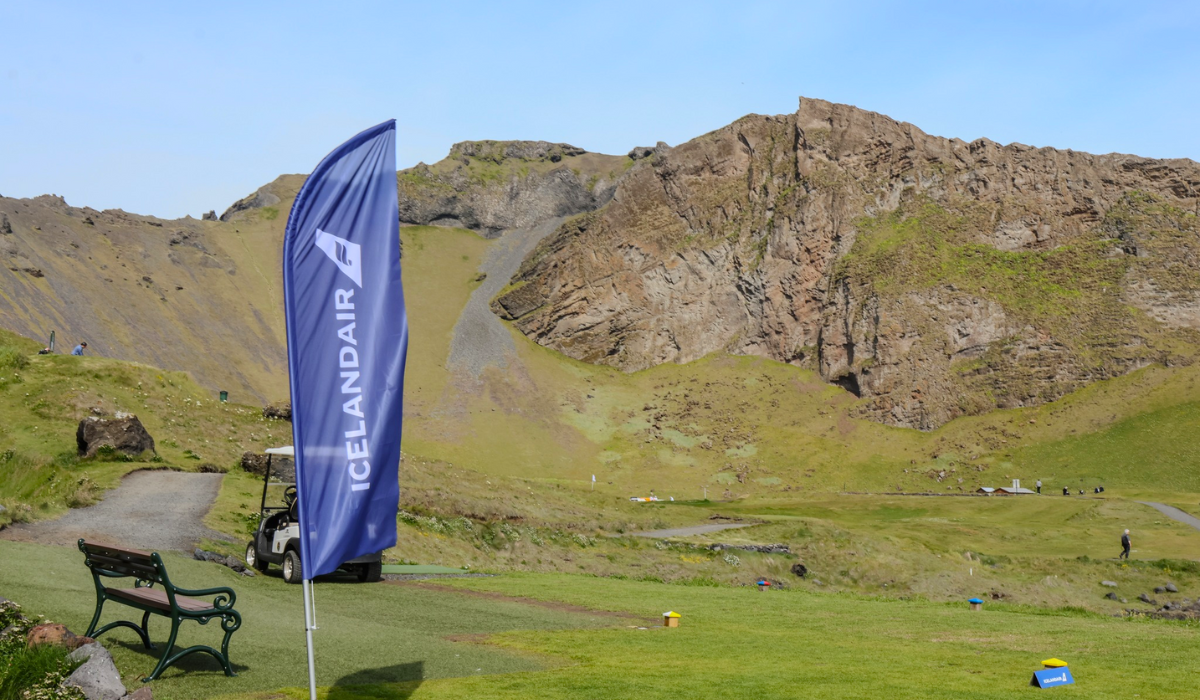
Golf in Iceland is less about tradition (compared to Scotland or Ireland) and more about nature, adventure, and landscape. Many locals relish the short but intense playing season and the opportunity to be outdoors in almost otherworldly settings. Icelandic golf’s identity is tied up with the land: volcanoes are ever-present, not distant stories but part of the view, often part of the hazard, sometimes part of the green.
Some courses carry names or tournaments that commemorate volcanic activity. For example, the Vestmannaeyjar Golf Club hosts the “Icelandair Volcano Open” in early July, in memory of the Eldfell volcano eruption of 1973 that dramatically affected Heimaey.
Also, volcanic geology sometimes shapes infrastructure: drainage, layout, and orientation. For instance, choosing tees and fairways to avoid the worst of lava flows, or integrating lava rock as features rather than trying to fully smooth them out.
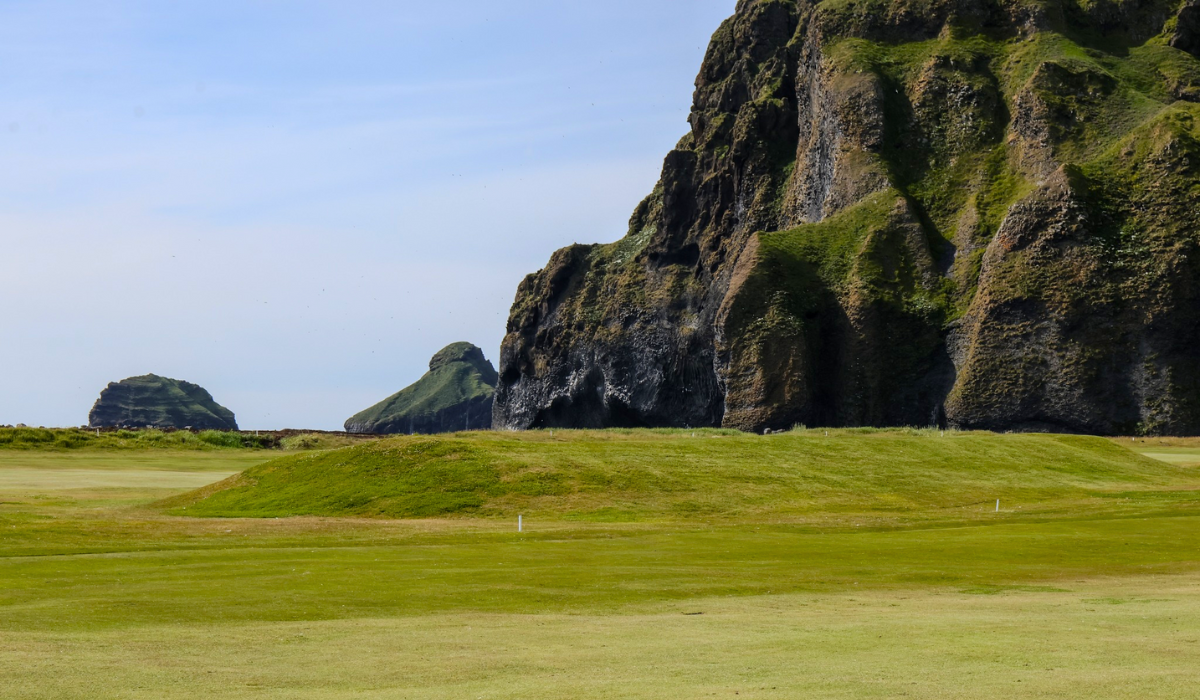
Volcanic golf in Iceland is not just about “cool views”. The terrain forces creativity in design and shotmaking. It offers a sensory contrast: smells of moss and sulphur, textures of rock vs grass, sound of wind and waves. It encourages respect for natural forces — glaciers, lava, weather — and invites awareness of geology. For many golfers, playing under the midnight sun with volcanoes and the ocean around is transformative rather than just another round.